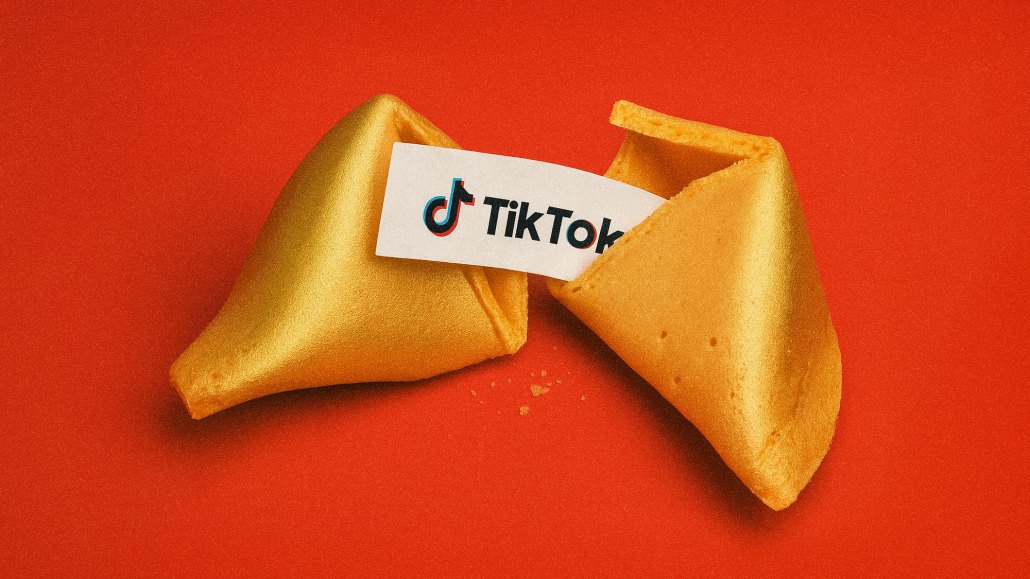TikTok’s ongoing U.S. uncertainty has marketers rethinking next year’s budgets

Even with TikTok’s future in the U.S. seemingly secured, advertiser confidence hasn’t followed suit. Some marketers are already planning, they anecdotally told Digiday, to scale back their spending there next year.
There’s still too much uncertainty around who will oversee the app and how it will be run for advertisers to justify bigger bets. And it will stay that way until there’s more clarity on what comes next.
“A new, U.S.-based version of TikTok would need to be vetted and understood before advertisers feel confident investing large amounts of advertising dollars in the platform, even if it maintains TikTok’s core functionality,” said Courtney Werpy, associate director of performance media at Collective Measures.
For now, what marketers know is murky at best. TikTok’s U.S. operations, which are still wholly owned by ByteDance, will continue to handle revenue-generating businesses like advertising and e-commerce, according to reports. Meanwhile, a new U.S. based joint venture, majority owned by American investors, will control the app’s user data and oversee retraining of the algorithm licensed from ByteDance.
And that’s where the questions begin — who will lead the app in the U.S., how will it be governed and will the shift will affect performance. So far, TikTok’s reps haven’t offered much clarity on any of the logistics around its future U.S. existence, but instead continue to remain calm, cool, and push marketers to spend more next year.
As Jellyfish’s global evp paid social, Shamsul Chowdhury put it, there’s a conversation for both the short and long-term impacts. But now is probably the worst time to have any uncertainty because it’s Q4 — the biggest quarter of the year. Arguably more so for his team’s retail clients who currently spend quite a bit of budget on TikTok, though he didn’t specify figures.
“In the short term, clients are thinking, if this new U.S. TikTok launches this quarter should they be spending the same amount of budget that was originally planned for TikTok? Probably not,” Chowdhury said. “Long-term, if this new platform doesn’t perform as well as the current TikTok, will they want to continue to invest there? Some advertisers will see the results and value of it. Others will become more conservative and revert to the tried and tested Google and Meta platforms.”
David Abbey, CEO of AI-powered influencer workflow and management platform Endlss had a similar take. From his perspective, if the platform fractures into a U.S.-only ecosystem or the new algorithm changes how content performs, both brands and creators are going to feel the pain fast.
“The moment engagement or discoverability dips, the dollars move,” he said. “If creators start losing reach or the platform hits technical turbulence during the transition, budgets will pivot fast to Instagram and YouTube Shorts.”
That’s not to say advertisers won’t continue to invest in TikTok right now if they’re seeing positive results. It’s the long-term planning that’s still a big question mark.
“Building campaigns around TikTok in 2026 requires more clarity about the U.S. app,” Basis Technologies’ client strategy and insights partner Colleen Fielder said. “The same caution applies to influencer marketing. We’d likely pause the spend once we get closer to the actual date of the transition and then wade in carefully as the new version is adopted for U.S. users.”
While advertisers are well versed in contingency planning, it’s still difficult to determine which avenue to take when there is no guarantee that TikTok U.S. will perform identically to the current app.
Brainlabs chief product officer, Adam Edwards, who confirmed that roughly 13% of the agency’s social spend over the last 12 months has gone to TikTok, said that if the transition changes performance, his team will reallocate budgets accordingly.
“It’s hard to tell if we pull out completely because it depends on how severely performance is impacted,” he said. “If the platform ultimately becomes too risky, we’ll have to peel away and assess as more info becomes available.”
TikTok’s U.S. ad revenue
Whether TikTok likes it or not, the platform relies on its U.S. ad revenue, given it is the platform’s largest market.
According to eMarketer’s September 2025 forecast, TikTok’s U.S. ad revenue is expected to rake in $14.03 billion this year, increasing 22.3% to $17.17 billion next year, and a further 24.8% increase to $21.43 billion in 2027.
For context, in 2024, TikTok’s global ad revenue was around $26.42 billion, while its U.S. ad revenue accounted for around 47% of that, reaching $12.29 billion, per eMarketer.
Similarly, back in March, WARC forecast that provided a U.S. ban is avoided this year, TikTok is forecast to earn $11.8 billion in U.S. ad revenue in 2025, rising to $13.4 billion in 2026.
According to industry expert, social media and creator economy (and former eMarketer vp) Jasmine Enberg, it wouldn’t be surprising to see ad spend dip around the transition, especially if multinational brands have to split or pivot their strategies.
“If the new [U.S.] TikTok can continue to drive the same results for advertisers, it’s likely that ad dollars will ultimately follow,” she said. “Some advertisers could even see the transition as a moment to gain first-mover-advantage on what could essentially be a new app, though that’s unlikely to offset pullbacks or pauses by major brands.”
U.S. ban or U.S. app — neither are TikTok’s only problem
While TikTok’s stoic, business as usual approach has been a success for the platform throughout its legal woes, there are still other challenges on the horizon.
Meta rushed out its feed of AI videos called Vibes within the Meta AI app on Sept. 25, while OpenAI launched its own standalone app of AI-generated videos called Sora on Sept. 30. The latter recorded more than 1 million downloads in less than five days, making it the number one app on Apple’s app store in early October, despite still being an invite-only app, currently only available in the U.S. and Canada.
“Sora is a risk to TikTok in the U.S. and everywhere,” said Jim Louderback, editor and CEO of Inside the Creator Economy newsletter. “It makes TikTok less valuable because less time will be spent on the app.”
Ultimately fewer eyeballs, means less interest from advertisers. As eMarketer reported in June, U.S. TikTok usage and time spent via any device has been on the decline, averaging at 52 minutes per day this year, which marked a 6.9% decrease year-over-year. Usage is expected to dip again to 50 minutes in 2026, and further to 48 in 2027. Though to its credit, this is still higher than Instagram (35 minutes per day) and Facebook (30 minutes per day) this year, eMarketer reported.
Still, maybe Sora and Vibes don’t become TikTok’s main rivals. Or maybe they do. But what they have done is provided the platforms with a playbook for how to build a highly engaging feed around AI-generated content, and how to monetize it.
TikTok did not respond to Digiday’s request for comment.
More in Marketing

How the MAHA movement influenced food and beverage brands in 2025
The MAHA movement has come to stand for different things in different people’s eyes, depending on which initiatives they most closely follow.

Why Georgia-Pacific is turning its programmatic scrutinty to the sell side
The company is turning its attention to the sell side, zeroing in on the ad tech firms that move inventory for publishers — the supply-side platforms.

Future of Marketing Briefing: Why ‘just good enough’ is generative AI’s real threat to marketers
When characters and mascots are allowed to live inside generative systems, they stop being event-based and start becoming environmental.







